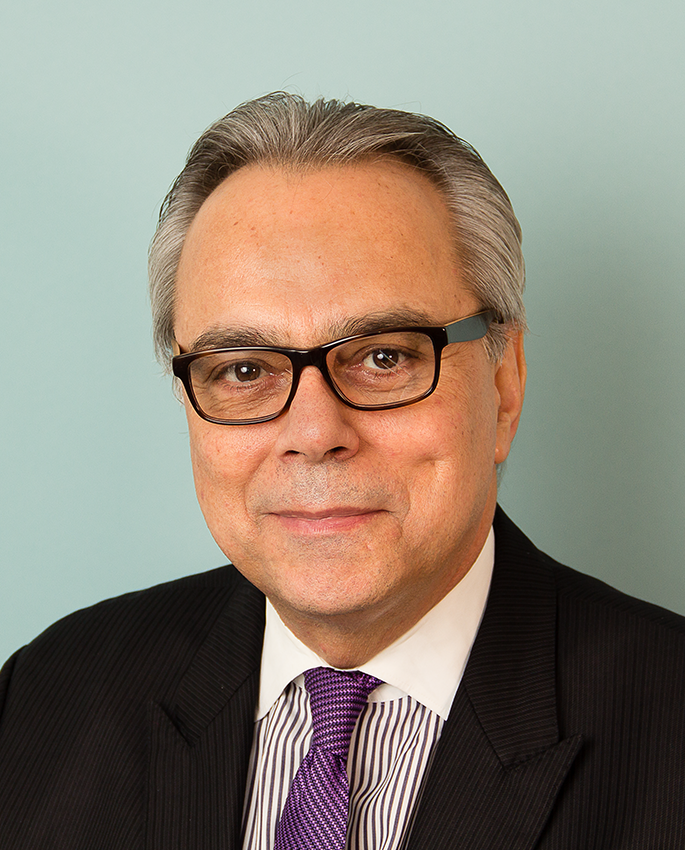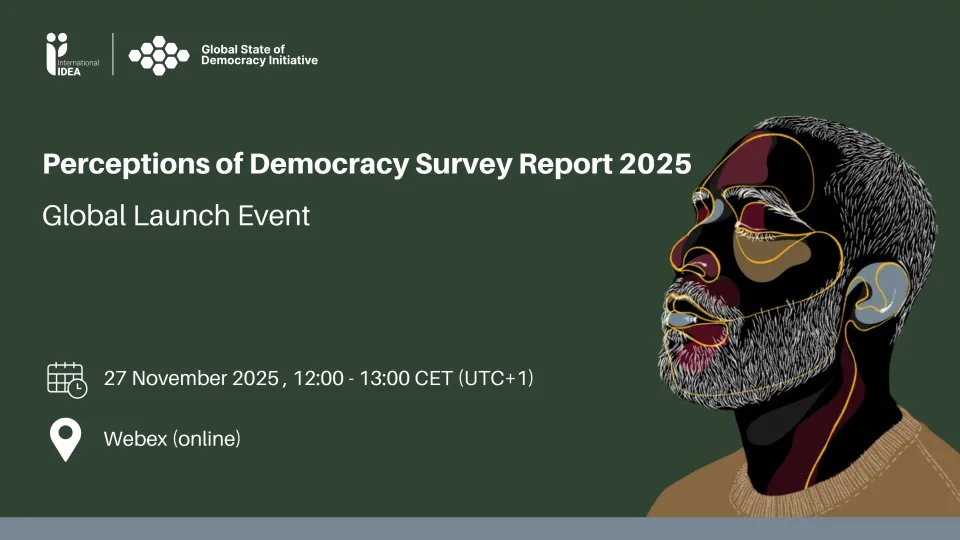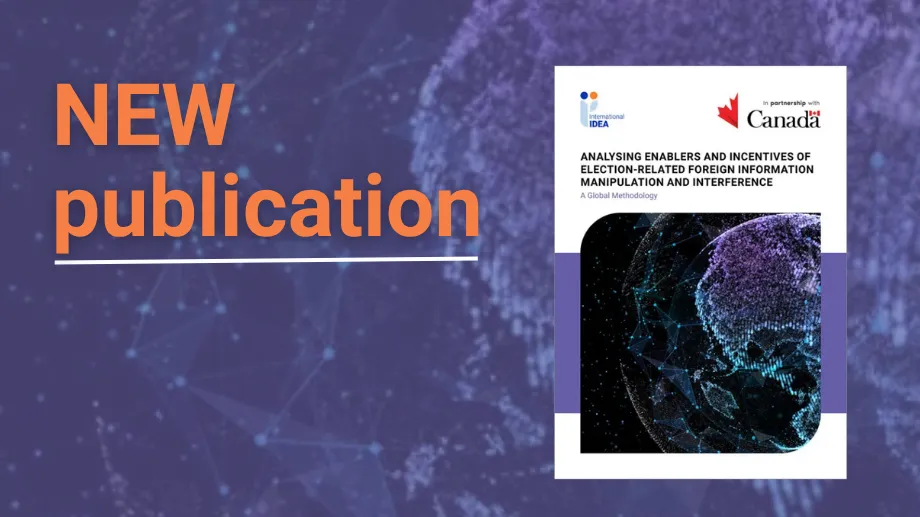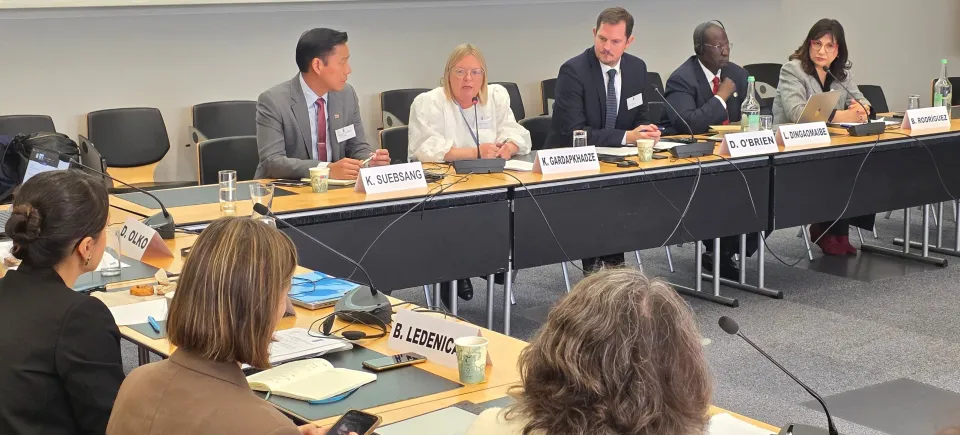Tenth World Economic Forum: Institutions and Leadership
The Tenth World Economic Forum on Latin America, held this year in the Mayan Riviera from 7 – 8 May, was an excellent opportunity to take the pulse of the situation in Latin America and to identify the main trends in the region.
The highlight was put on the major economic slowdown besetting Latin America. After a decade of intensive growth and major social gains, the region is now entering a new and long-term cycle as a result of the economic changes at the international level. According to the International Monetary Fund (IMF), this year, the region will grow at an anemic rate of 0.9% average growth, which marks another drop for the fifth year in a row and the slowest growth since 2002, with the exception of 2009 when Latin America was caught up in the global crisis. In 2014, the growth was just 1.3%
Should this forecast be confirmed, according to the Inter-American Development Bank (IADB), the average growth rate of the region for 2011-2016 will be a mere 2.6%. This is similar to what was experienced during the period 1980 to 2003 and is just 40% of the growth during the golden period of 2003 to 2010.
Nonetheless, we should nuance this bad news with two positive factors. Firstly, at present, most of the countries in the region are better prepared than two decades ago to take on this new outlook.
Secondly, one must not forget the heterogeneous characteristic of Latin America, and which explains, as J. J. Ruiz, chief economist at the IADB points out, that the 0.9% growth projected for the region is mainly due to the recession in countries such as Venezuela, Argentina, and Brazil - which account for 51% of regional GDP - and to the 3.2% growth of “the other Latin America”. According to J.J Ruiz this growth rate is comparable to that of Europe or most of the emerging economies.
Another issue that sparked considerable interest was the debate on whether Latin America has the institutions necessary to respond to the challenges of the new regional scenario. It was agreed that sound institutions constitute an indispensable prerequisite for development. Unfortunately, the regional institutional environment is poor, as stated in the World Economic Forum (WEF) Global Competitiveness Index. I myself participated in a panel (The Rise of Institutions) that reviewed the phenomena of corruption and the lack of transparency, as well as the structural weaknesses in the judicial, legislative, and executive branches of governments in the region. The panel also analyzed the low levels of accountability, the widespread weak rule of law, citizen insecurity, the violence stemming from drug trafficking and organized crime, and the growing distrust that besets the political institutions, concluding with a series of proposed reforms aimed at overcoming these serious institutional weaknesses.
The seven “i”s
The region has a number of deficits which, in light of the different debates and panels that I participated in, I would summarize as the seven “i”s. The first is inequity, which, notwithstanding the major gains in the last decade, makes it such that we continue to be the most unequal region in the world. The second is informality. According to ILO data, 47% of the working population finds work in the informal sector. The third is low-quality innovation and education. The region invests (on average) approximately 1% of GDP in innovation, which is insufficient and our students (from the countries of Latin America that participate in the Organization for Economic Co-operation and Development (OECD) PISA tests) are ranked in the last places. The fourth is the major deficit with regard to infrastructure. The fifth is the low quality of our institutions. The sixth and seventh, which are very connected to the previous one, are insecurity, both citizen insecurity and juridical insecurity, and impunity.
The three priority challenges
With this background, a broad consensus was reached at the meeting that the region should urgently implement a strategic medium- and long-term agenda to respond to three main challenges:
- Recovering economic growth and making it inclusive and ecologically sustainable. To that end, it is crucial to innovate, diversify the productive matrix and not continue relying exclusively on raw materials, and to improve productivity and competitiveness, since these constitute the region’s real Achilles’ heel. Since the 1990’s, the region has increased its productivity by only 1.6%, whereas the Asian developing countries have increased theirs by nearly 30%. The priority of such growth should be to create quality, stable, and well-paid jobs.
- Strengthening and deepening the social gains of the last decade, where more than 60 million people climbed out of poverty to become part of the “emerging” middle class. Attaining this objective requires having a strategic state, endowed with a professional and modern bureaucracy, and sufficient fiscal resources to ensure efficient social spending and quality public services. Today, tax revenues amount to only 20% of GDP (on average for the region), which is far below the OECD countries. Fiscal adjustments that are already being implemented in some countries, and which in others will be put in place soon, should be pragmatic and not ideological. In other words, what is needed is intelligent austerity that is capable of reconciling macroeconomic discipline with the protection of the benefits acquired by the citizens while reducing poverty and strengthening a steadily growing middle class.
- Modernizing and strengthening the institutional framework, in order to adapt to the new realities and thus have legitimate, transparent, and effective institutions that are accountable and responding to social demands at a time when there is profound discontent on the part of citizens due to the gap between expectations and the possibilities of government and society to satisfy them. We refer to both economic and political institutions, especially strengthening political parties, the judicial branch, the oversight bodies, and the mechanisms for ensuring transparency and accountability. Fighting organized crime and corruption needs to be assigned top priority.
In my opinion, three messages from this tenth meeting of the WEF should be emphasized. First, Latin America is at a crossroads of meeting an adverse international context, economic slowdown, greater social demands, and complex governability. The decisions made now will mark the region’s path for the coming decades. Second, the mood has changed in Latin America: a more moderate and even cautious optimism has replaced the exuberant optimism of previous years. And third, the new cycle requires not only legitimate and effective institutions, but also quality and bold leadership to urgently set in motion an agenda of structural reforms aimed at modernizing the development model and strategically adapting to the new global and Latin American context in the various countries of the region.




